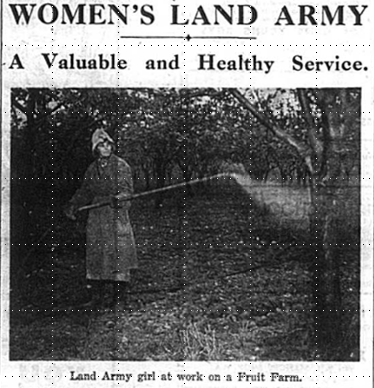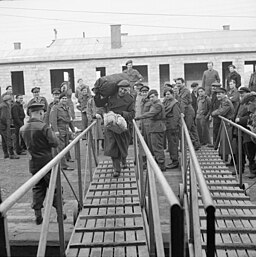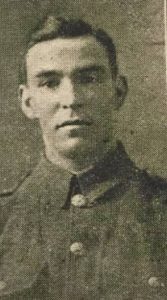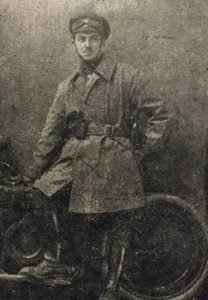Between June 1939 and November 1950, over 200,000 women were employed by the Women’s Land Army; an army of women, known as Land Girls, who replaced farm workers who had gone off to war.
These women came from all walks of life, and despite having little to no experience of agriculture, they ploughed, drove tractors, grew produce, milked cows and much more, to help with the critical need to increase food production around the country.
The Women’s Land Army started to publish a monthly magazine called ‘The Land Girl’, with Margaret Pyke as its editor, in April 1940. In March 1941 the magazine launched a national appeal for members to recruit other new volunteers.
This article appeared in the local Bromley & Kentish Times newspaper.

A Valuable and Healthy Service
A special effort is being made this week to recruit for the Women’s Land Army. Kent is in the very proud position of employing more land girls than any other county. The number of girls working at the end of February was 573.
The total number of enrolments at that date was 636, but at least 1,000 are wanted. There is already a waiting list of farmers anxious to employ girls for the duration of the war an a rapidly increasing demand is anticipated.
The preliminary object of the W.A.L. is to supply labour for regular employment through the war and girls enrolling must be ready to be sent all over the country, although the demand for this services is so great in this county that they are not likely to be sent elsewhere unless at their own request.
A month’s free training is given to girls in colleges, farm institutes or on farms during which time they receive 10s a week personal allowance from the Government.
There is an attractive uniform, and in any part of the county the green jersey, corduroy breeches and slouch hat of the Women’s Land Army are well known.
It is undoubtedly one of the hardest of the women’s war services, but it is also one of the healthiest, as the bright eye, clear complexion and sturdy walk go to prove. Cases of serious illness are almost unknown and yet these girls come from all walks of life, many having led a sheltered indoor existence previously.
Girls usually make very good milkers. The true story of the girl who was urged to take up milking for her training and replied she would certainly do it if necessary, but as she was frightened of cows might she begin on a calf, is only typical of the many town-bred girls who have turned into excellent dairy maids.
Half-diamond badges are awarded after six months’ good service in the Land Army and the full-diamond after twelve months. There is no doubt these girls are making good, as 127 have earned full-diamonds and 224 half-diamonds.

“What they lack in physical strength they make up in adaptability,” to quote an article written by Mr Garrod, County Agricultural Organiser, whose experieance of the Land Army covers the last war as well as this.
The girls often fit in splendidly into the social life of the villages. In the Tenterden area they organised a most successful dance in aid of the Spitfire Fund an raised over £8, and the same thing happened in Canterbury.
Women and girls who are willing to help their country in this vital way should write for full particulars to the organising secretary for Kent of the Women’s Land Army, Miss V. M. M. Cox, Great Comp, Borough Green, Kent.

Sources:
Bromley & Kentish Times, March 1941
WLA Arm Band – Catherine Procter WLA Collection
History of the WLA – www.womenslandarmy.co.uk




